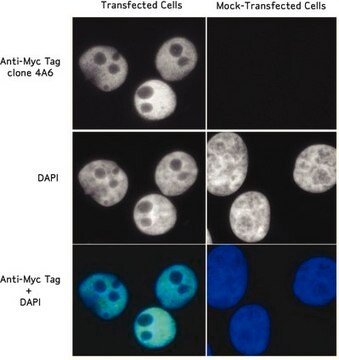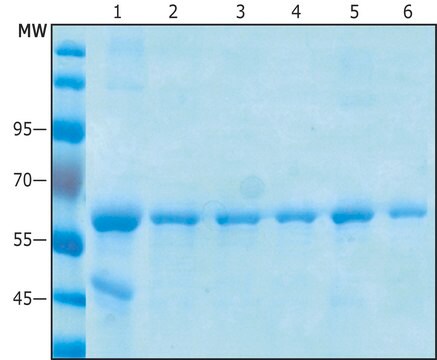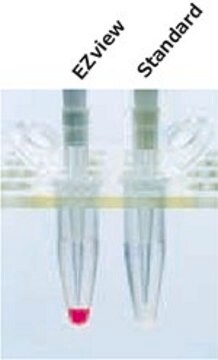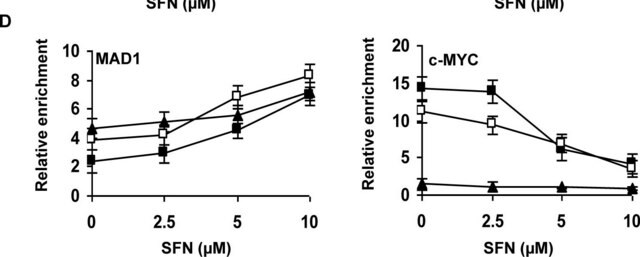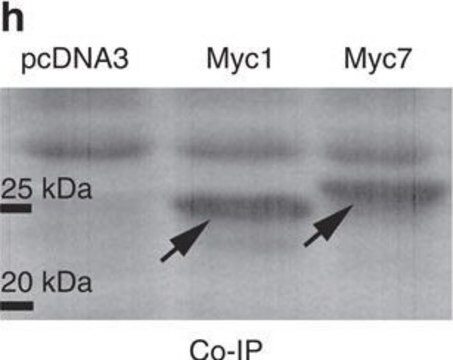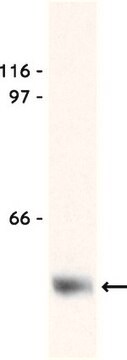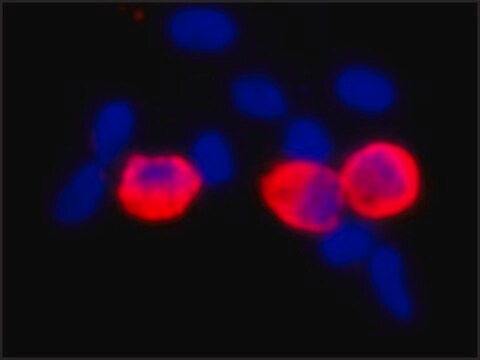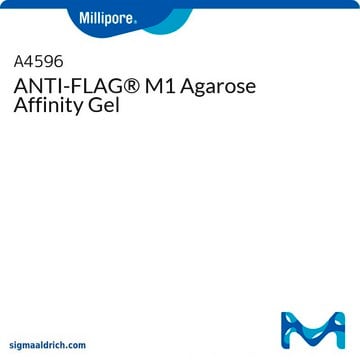16-219
Anti-c-Myc Tag Antibody
UPSTATE®, monoclonal, 4A6
About This Item
Recommended Products
Product Name
Anti-Myc Tag Antibody, clone 4A6, agarose conjugate, clone 4A6, Upstate®, from mouse
biological source
mouse
Quality Level
antibody form
purified immunoglobulin
antibody product type
primary antibodies
clone
4A6, monoclonal
species reactivity
human
manufacturer/tradename
Upstate®
technique(s)
immunoprecipitation (IP): suitable
NCBI accession no.
UniProt accession no.
shipped in
wet ice
target post-translational modification
unmodified
Gene Information
human ... MYC(4609)
General description
Specificity
Immunogen
Application
A previous lot was used to purify Myc-tagged proteins. Elute with 100 mM tetraethyl ammonium (TEA), pH 11.5.
Features and Benefits
Quality
Immunoprecipitation Analysis:
4 μg of anti-Myc Tag, clone 4A6, agarose conjugate immunoprecipitated Myc-tagged Akt/PKB from 250 μg of a COS transfected cell lysate, which was then detected by immunoblot analysis, using 0.5 μg/mL of anti-Myc Tag, clone 4A6 (Catalog # 05-724).
Target description
Physical form
Storage and Stability
Analysis Note
Cells transfected with Myc-tagged fusion vector.
Other Notes
Legal Information
Not finding the right product?
Try our Product Selector Tool.
Storage Class Code
10 - Combustible liquids
WGK
WGK 2
Certificates of Analysis (COA)
Search for Certificates of Analysis (COA) by entering the products Lot/Batch Number. Lot and Batch Numbers can be found on a product’s label following the words ‘Lot’ or ‘Batch’.
Already Own This Product?
Find documentation for the products that you have recently purchased in the Document Library.
Customers Also Viewed
Our team of scientists has experience in all areas of research including Life Science, Material Science, Chemical Synthesis, Chromatography, Analytical and many others.
Contact Technical Service
